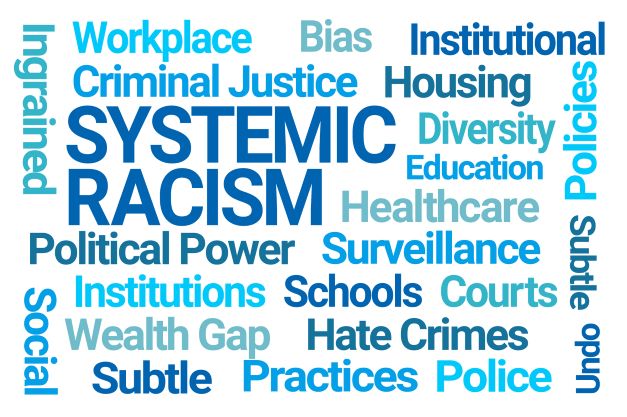Liberty Matters
Systemic Racism: Four Intersecting Perspectives
 At its best, systemic race theory is the idea that (1) Slavery and Jim Crow imbedded overtly racist structures throughout American institutions; (2) Remnants of these structures still incentivize discrimination; and (3) Public policy should strive to reduce such malign incentives. At its worst, systemic race theory is an all-purpose pretext for gutting core principles of American constitutional governance and civil society.
At its best, systemic race theory is the idea that (1) Slavery and Jim Crow imbedded overtly racist structures throughout American institutions; (2) Remnants of these structures still incentivize discrimination; and (3) Public policy should strive to reduce such malign incentives. At its worst, systemic race theory is an all-purpose pretext for gutting core principles of American constitutional governance and civil society.A central question in contemporary America is: How much residual damage remains from overt racism, and what should we do about it? In introducing the four essays of this collection, business professor Ramon DeGennaro notes that web searches for “systemic racism in education in the United States” and “racial disparities in healthcare in the United States” return nearly 40 million hits apiece. In our essays, Darcy Nikol Bryan and I examine this central question in the context of healthcare; Harold Black and John Sibley Butler do so with respect to education.
I’m a health economist, and my essay says systemic race theory is a legitimate construct, but one abused by its proponents. In my home state, Virginia, the constitution extant from 1902 to 1971 was specifically designed to disenfranchise and marginalize African Americans, and the state government relentlessly pursued those goals. It would be surprising if those discriminatory incentives had evaporated entirely, even half a century after purposeful racism dissipated. It is productive to identify continuing sources of discrimination, measure the extent of their damage, and seek effective mitigation strategies. Unfortunately, many proponents leap over those steps, assuming on faith that any measured disparities (in health, wealth, employment, etc.) prove systemic racism. They thus dismiss alternative etiologies, such as genetics, personal choices, and measurement errors. They demand policies lacking evidence of efficacy, vilify those who question their conjectures, and advocate breathtakingly authoritarian prescriptions.
Darcy Nikol Bryan is an obstetrician/gynecologist with a long history of serving Medicaid populations. Bryan gently warns against the simplistic poultices that activists would apply to the body politic. She lists sectors where structural inequities remain, adding: “Most, if not all aspects of civic and personal life are captured in this list.” She continues, “I am not sanguine that structural biases are modifiable by expertise and government intervention. … The government cannot ensure healthy behavior in a free society.” “Money,” she notes, “can pile into bureaucratic hands with minimal effect.”
Finance professor Harold Black asks whether systemic racism exists in K-12 education and poses a biting question: How is it that discrimination continues in places where “blacks dominate housing administrators, the education establishment, the police and the justice system?” He asks, “Is the racism of the past so deeply embedded in our schools that the differentials in achievement persist even though many urban school systems have significant numbers of black teachers and black administrators?” He also notes that simple disparity measures between whites and blacks may mask more relevant causal factors (e.g., poverty). Educators, he says, are loading their curricula down with impotent and destructive racial rituals, such as assuming “it is white supremacy to expect a student to write out the mathematical process and show the steps taken to arrive at the answer.”
Sociologist John Sibley Butler offers the most strident, multifaceted criticism of systemic race theory. Systemic racism, he suggests, conflicts with the successes of Jews, Mormons, Japanese Americans, Nigerian Americans, and other sometimes-marginalized groups. Systemic race theory, he says, overlooks social mobility and is especially poor at understanding the African American experience in America. African Americans, he argued, fared better in states with powerful Jim Crow laws than in states with less overt racism. He notes that, to a greater degree, those who remained in Jim Crow states began businesses, built universities, and achieved higher degrees of education. He is unflinching in describing past racism, but also says, “Legal scholars are trying to persecute America, not explain its vast ability to create new opportunities.”
Copyright and Fair Use Statement
“Liberty Matters” is the copyright of Liberty Fund, Inc. This material is put on line to further the educational goals of Liberty Fund, Inc. These essays and responses may be quoted and otherwise used under “fair use” provisions for educational and academic purposes. To reprint these essays in course booklets requires the prior permission of Liberty Fund, Inc. Please contact oll@libertyfund.org if you have any questions.